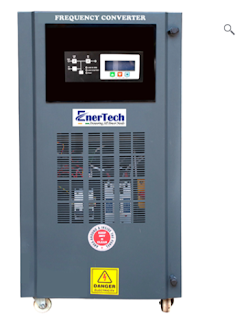Static Frequency Converters (SFCs) have emerged as indispensable devices in various industries, providing a stable and controlled power supply. Let's delve into the world of Static Frequency Converters, understanding their functionality, applications, and the factors to consider when choosing and maintaining these crucial components.
Introduction to Static Frequency Converters
In the realm of electrical engineering, Static Frequency Converters play a pivotal role in ensuring the stability of power systems. These devices facilitate the conversion of electrical power from one frequency to another, offering flexibility in managing diverse power sources.
How Static Frequency Converters Work
Static Frequency Converters operate on the principle of electronic switching, converting alternating current (AC) power from one frequency to another with precision. This section unravels the intricate workings of Static Frequency Converters, providing insights into their efficiency and reliability.
Applications of Static Frequency Converters
From aviation and maritime industries to data centres and manufacturing plants, Static Frequency Converters find applications in a myriad of sectors. Explore the versatility of these devices and how they contribute to the seamless functioning of critical systems.
Advantages of Using Static Frequency Converters
Discover the advantages that make Static Frequency Converters the preferred choice in various industries. From power quality improvement to load compatibility, Static Frequency Converters offer a range of benefits that enhance operational efficiency.
Key Components of a Static Frequency Converter
Understanding the key components of an SFC is crucial for users and operators. This section provides an in-depth analysis of the elements that make up these converters, shedding light on their individual roles in the conversion process.
Choosing the Right Static Frequency Converter
Selecting the appropriate SFC for a specific application requires careful consideration. Navigate the decision-making process with insights into capacity, compatibility, and other critical factors that influence the choice of an SFC.
Common Issues and Troubleshooting
No technology is without its challenges. Uncover common issues associated with Static Frequency Converters and learn effective troubleshooting techniques to address potential problems swiftly.
Maintenance Tips for Static Frequency Converters
Proper maintenance is essential for the longevity and optimal performance of Static Frequency Converters. This section provides practical tips and guidelines for routine maintenance, ensuring the reliability of these devices over time.
Static Frequency Converters vs. Variable Frequency Drives
Distinguish between Static Frequency Converters and Variable Frequency Drives (VFDs), understanding their respective applications, advantages, and limitations. Gain clarity on when to choose one over the other based on specific operational requirements.
Case Studies: Real-world Applications
Explore real-world scenarios where Static Frequency Converters have made a significant impact. Case studies showcase the adaptability and effectiveness of Static Frequency Converters in diverse industries, providing tangible examples of their success stories.
Future Trends in Static Frequency Converter Technology
Stay ahead of the curve with a glimpse into the future of SFC technology. Emerging trends such as advanced control systems, increased efficiency, and enhanced integration capabilities are shaping the next generation of Static Frequency Converters.
Environmental Impact and Sustainability
In an era focused on sustainability, evaluate the environmental impact of Static Frequency Converters and their role in creating energy-efficient solutions. Understand how these devices align with global efforts towards a greener and more sustainable future.
Cost Considerations for Static Frequency Converters
While the benefits of Static Frequency Converters are evident, this section addresses the economic aspect. Explore cost considerations, return on investment, and factors influencing the overall affordability of integrating Static Frequency Converters into your system.
Regulatory Compliance and Standards
Navigate the regulatory landscape surrounding Static Frequency Converters, ensuring compliance with industry standards and regulations. This section provides an overview of the guidelines that govern the use and implementation of Static Frequency Converters.
Conclusion
As we wrap up our exploration of Static Frequency Converters, it's clear that these devices are integral to the seamless functioning of modern power systems. Their adaptability, efficiency, and reliability make them indispensable across various industries, paving the way for a more stable and sustainable energy future.
FAQs: Frequently Asked Questions
Are static frequency converters suitable for residential use?
While primarily used in industrial settings, some models are designed for residential applications, offering stable power supply for specific needs.
Can static frequency converters handle sudden power surges?
Yes, many static frequency converters are equipped with surge protection mechanisms to handle sudden increases in power.
Do I need a professional for static frequency converter installation?
It is advisable to have a qualified professional handle the installation to ensure proper setup and prevent potential issues.
What is the typical lifespan of a static frequency converter?
The lifespan varies but with regular maintenance, static frequency converters can operate efficiently for many years.
Can static frequency converters be used with renewable energy sources?
Yes, static frequency converters can be integrated with renewable energy systems to ensure stable and reliable power conversion.

